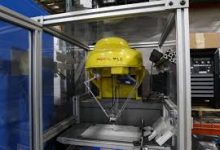Embarking on the Developmental Journey of Multisensory Integration
A Comprehensive Exploration

Introduction:
In the intricate landscape of human development, the journey of multisensory integration unfolds as a fascinating and crucial process that shapes our perception, cognition, and interaction with the world. From the earliest moments of infancy to the complexities of adult life, multisensory integration undergoes remarkable transformations, guided by a dynamic interplay of genetic, environmental, and experiential factors. In this comprehensive exploration, we delve into the developmental aspects of multisensory integration, unraveling its trajectory from infancy through childhood and adolescence, and uncovering its implications for neurodevelopmental disorders, education, and therapeutic interventions.
Early Sensory Development:
The journey of multisensory integration begins in the womb, where developing fetuses are exposed to a rich array of sensory stimuli from the maternal environment. Even before birth, fetuses demonstrate rudimentary multisensory capabilities, such as responding to maternal voices, rhythmic sounds, and tactile sensations. After birth, infants continue to refine their sensory abilities through exposure to a diverse range of sensory experiences, including sights, sounds, tastes, touches, and smells. During the first year of life, infants rapidly learn to integrate information from multiple senses, enabling them to recognize familiar faces, localize sounds, and coordinate their movements in space.
Embarking on the Fascinating Journey of Early Sensory Development
The journey of human sensory development commences long before birth, as developing fetuses are immersed in a rich tapestry of sensory experiences within the womb. From the gentle swaying of amniotic fluid to the muffled sound of maternal heartbeat, these prenatal sensations lay the groundwork for the intricate process of sensory perception that unfolds after birth. In this comprehensive exploration, we delve into the fascinating journey of early sensory development, tracing the emergence of sensory abilities from infancy through early childhood, and uncovering the profound implications for cognition, behavior, and lifelong health and well-being.
Prenatal Sensory Experiences:
The journey of sensory development begins in utero, where developing fetuses are exposed to a myriad of sensory stimuli from the maternal environment. By the second trimester of pregnancy, fetuses demonstrate rudimentary sensory capabilities, including responsiveness to tactile stimulation, sound, and even light filtering through the womb. Prenatal sensory experiences play a crucial role in shaping the development of sensory systems and laying the foundation for postnatal sensory processing. For example, exposure to maternal speech and other environmental sounds helps to shape the auditory pathways and refine the ability to discriminate speech sounds after birth.
Birth and the Emergence of Sensory Abilities:
Upon birth, infants are thrust into a world teeming with sensory stimuli, where they must quickly learn to navigate and make sense of their surroundings. The early postnatal period is characterized by rapid sensory development, as infants begin to explore and interact with their environment through sight, sound, touch, taste, and smell. Reflexive behaviors, such as rooting and sucking, allow newborns to seek out and respond to sensory cues, while sensory exploration through mouthing and grasping helps to refine motor skills and sensory processing abilities.
Sensory Systems and Brain Development:
During early infancy, sensory systems undergo rapid maturation, with sensory organs and neural circuits becoming increasingly specialized and refined. Each sensory modality, including vision, audition, touch, taste, and smell, follows its own unique developmental trajectory, guided by genetic factors, environmental influences, and sensory experiences. For example, the visual system undergoes significant development during the first year of life, with infants gradually acquiring the ability to focus, track moving objects, and perceive depth and distance.
Sensory Integration and Multimodal Perception:
As infants grow and develop, they begin to integrate information from multiple sensory modalities to form a coherent perceptual experience of the world. Multimodal perception enables infants to make sense of complex sensory inputs and recognize patterns and relationships across different sensory domains. For example, the ability to match faces with corresponding voices relies on integrating visual and auditory cues, while the ability to locate a hidden object depends on integrating visual, auditory, and tactile information. Multimodal perception lays the foundation for higher-level cognitive processes, such as attention, memory, and language development.
Sensory Development and Cognitive Milestones:
Sensory development is closely intertwined with cognitive development, with sensory experiences providing the raw material for learning, memory formation, and problem-solving. For example, visual exploration of faces and objects contributes to the development of social cognition and object permanence, while auditory exposure to language sounds supports the development of speech and language skills. Early sensory experiences also shape the development of sensory-motor skills, such as reaching, grasping, and locomotion, which are critical for independent exploration and interaction with the environment.
Environmental Influences and Sensory Enrichment:
Environmental factors play a crucial role in shaping the trajectory of sensory development, with sensory-rich environments providing opportunities for sensory exploration, stimulation, and learning. Infants raised in enriched environments, characterized by varied sensory experiences and opportunities for social interaction, exhibit enhanced sensory processing abilities and cognitive development compared to those raised in deprived environments. Conversely, sensory deprivation or impoverished environments can disrupt normal sensory development and lead to deficits in sensory processing and cognitive function.
Sensory Processing Disorders and Interventions:
Disruptions in early sensory development can manifest as sensory processing disorders, such as sensory hypersensitivity, sensory seeking behavior, or sensory processing difficulties. These disorders can have profound implications for cognitive, emotional, and social functioning, impacting daily activities and quality of life. Early identification and intervention for sensory processing disorders are critical for promoting positive outcomes and mitigating long-term consequences. Sensory-based interventions, such as sensory integration therapy, occupational therapy, and behavioral interventions, aim to address sensory processing difficulties and promote adaptive sensory responses and functional skills.
Conclusion:
In conclusion, the journey of early sensory development is a fascinating and dynamic process that shapes the foundation of human perception, cognition, and behavior. From prenatal sensory experiences to the complexities of infancy and early childhood, sensory development unfolds through a complex interplay of genetic, environmental, and experiential factors. Understanding the intricacies of early sensory development has profound implications for promoting optimal development and well-being across the lifespan, highlighting the importance of creating sensory-rich environments and providing early intervention and support for children with sensory processing difficulties.
Sensory Specialization and Plasticity:
As infants grow and develop, they undergo a process of sensory specialization and refinement, whereby neural circuits become increasingly specialized for processing specific sensory modalities. For example, visual cortex neurons become tuned to detect visual features, while auditory cortex neurons become specialized for processing auditory stimuli. However, this process is not rigid or predetermined; rather, it is characterized by remarkable plasticity and adaptability. Sensory experiences during critical periods of development can sculpt the structure and function of neural circuits, leading to long-lasting changes in multisensory processing.
Embarking on the Journey of Sensory Specialization and Plasticity: A Comprehensive Exploration
In the wondrous realm of human sensory perception, the processes of specialization and plasticity play pivotal roles in shaping our ability to perceive and interact with the world. From the intricate wiring of neural circuits to the dynamic adaptations in response to environmental stimuli, sensory specialization and plasticity underlie the remarkable versatility and adaptability of the human sensory system. In this comprehensive exploration, we delve into the journey of sensory specialization and plasticity, unraveling their mechanisms, developmental trajectories, and implications for perception, cognition, and behavior.
Understanding Sensory Specialization:
Sensory specialization refers to the process by which neural circuits become increasingly specialized and finely tuned for processing specific types of sensory information. Each sensory modality, including vision, audition, touch, taste, and smell, follows its own unique developmental trajectory, guided by genetic factors, environmental influences, and sensory experiences. For example, visual cortical neurons become specialized for detecting visual features such as color, motion, and form, while auditory cortical neurons become tuned to specific frequencies and temporal patterns of sound.
Mechanisms of Sensory Specialization:
The mechanisms underlying sensory specialization are multifaceted and involve a combination of genetic predispositions, neural activity-dependent processes, and environmental influences. During early development, sensory experiences play a crucial role in shaping the structure and function of sensory circuits through processes such as synaptic pruning, dendritic arborization, and myelination. Neural plasticity, the ability of neural circuits to undergo structural and functional changes in response to experience, is a key driver of sensory specialization, allowing sensory systems to adapt and refine their processing capabilities in accordance with environmental demands.
Developmental Trajectories of Sensory Specialization:
Sensory specialization follows a dynamic developmental trajectory, with different sensory modalities reaching critical milestones at distinct stages of development. For example, the visual system undergoes significant maturation during the prenatal and early postnatal periods, with the establishment of retinotopic maps, refinement of ocular dominance columns, and development of visual acuity and contrast sensitivity. Auditory development, on the other hand, continues into early childhood, with the refinement of frequency tuning, sound localization abilities, and speech perception skills.
Critical Periods and Sensitive Periods:
Sensory specialization is characterized by critical periods, or sensitive periods, during which sensory experiences exert maximal influence on the development of sensory circuits. These critical periods represent windows of heightened plasticity, during which sensory systems are particularly sensitive to environmental input and experience-dependent changes. For example, the visual system exhibits a critical period for binocular vision and depth perception during early infancy, while the auditory system shows a critical period for language acquisition and speech development during early childhood.
Sensory Plasticity:
Sensory plasticity refers to the ability of sensory circuits to undergo structural and functional changes in response to sensory experiences, learning, and environmental stimuli. This plasticity allows sensory systems to adapt and reorganize in accordance with changing environmental demands, enabling individuals to acquire new skills, learn from experience, and recover from sensory deprivation or injury. Sensory plasticity can occur at multiple levels of the nervous system, from synaptic modifications in individual neurons to large-scale reorganization of cortical circuits.
Experience-Dependent Plasticity:
Experience-dependent plasticity refers to the process by which sensory experiences shape the development and refinement of sensory circuits through activity-dependent mechanisms. Sensory experiences provide the raw material for learning, memory formation, and skill acquisition, driving changes in synaptic connectivity, neurotransmitter release, and gene expression within sensory circuits. For example, exposure to enriched sensory environments, characterized by varied sensory stimuli and opportunities for exploration and learning, promotes the development of robust sensory processing abilities and cognitive skills.
Environmental Enrichment and Sensory Stimulation:
Environmental enrichment, which involves providing animals or humans with enhanced sensory stimulation and opportunities for exploration and social interaction, has been shown to promote sensory specialization and plasticity in various species. Enriched environments increase synaptic connectivity, dendritic branching, and neurogenesis within sensory circuits, leading to improvements in sensory processing, cognitive function, and emotional well-being. Sensory-based interventions, such as sensory integration therapy, occupational therapy, and environmental enrichment programs, aim to harness the principles of sensory plasticity to promote positive outcomes for individuals with sensory processing difficulties or neurodevelopmental disorders.
Implications for Intervention and Rehabilitation:
Understanding the mechanisms of sensory specialization and plasticity has important implications for intervention and rehabilitation in individuals with sensory impairments or neurodevelopmental disorders. Sensory-based interventions, such as sensory integration therapy, auditory training, and tactile stimulation, can capitalize on the principles of sensory plasticity to promote adaptive sensory responses and improve functional outcomes. Moreover, advances in neurorehabilitation techniques, such as sensory substitution devices and brain-computer interfaces, offer new opportunities to harness the brain’s plasticity to restore sensory function and enhance quality of life in individuals with sensory deficits.
Conclusion:
In conclusion, the journey of sensory specialization and plasticity is a dynamic and intricate process that unfolds throughout the lifespan, shaping the development of sensory circuits and the emergence of perceptual and cognitive abilities. From the prenatal period through early childhood and beyond, sensory systems undergo continuous refinement and adaptation in response to environmental stimuli and sensory experiences. Understanding the mechanisms and developmental trajectories of sensory specialization and plasticity offers insights into the principles of neural development, learning, and adaptation, and holds promise for informing interventions aimed at promoting optimal sensory function and well-being across the lifespan.
Integration of Sensory Modalities:
During infancy and early childhood, children gradually learn to integrate information from multiple sensory modalities, such as vision, audition, touch, and proprioception. This integration occurs through a process of cross-modal calibration, whereby sensory inputs from different modalities are aligned and combined to form coherent perceptual representations. For example, infants learn to associate visual and auditory cues with the same object or event, facilitating the development of cross-modal associations and expectations. Through repeated exposure to multisensory experiences, children refine their ability to integrate sensory inputs, leading to more accurate and efficient perception.
Embarking on the Journey of Integrating Sensory Modalities: Understanding the Intricacies
In the intricate landscape of human perception, the integration of sensory modalities stands as a cornerstone process that enables us to construct a unified and coherent representation of the world around us. From the convergence of visual, auditory, tactile, olfactory, and gustatory inputs emerges a rich tapestry of sensory experiences that shapes our understanding of the environment and guides our behavior. In this comprehensive exploration, we delve into the journey of integrating sensory modalities, unraveling the mechanisms, developmental trajectories, and implications for perception, cognition, and behavior.
Neural Mechanisms of Multisensory Integration:
Multisensory integration relies on a distributed network of neural circuits that span both cortical and subcortical regions of the brain. Key structures involved in multisensory processing include the superior colliculus, thalamus, and cortical association areas. These regions receive inputs from sensory-specific cortices and integrate them through cross-modal interactions, leading to the emergence of multisensory representations and perceptions.
Developmental Trajectories of Multisensory Integration:
The development of multisensory integration follows a dynamic trajectory, with different sensory modalities reaching critical milestones at distinct stages of development. During infancy and early childhood, children gradually learn to integrate information from multiple sensory modalities, enabling them to recognize familiar objects, localize sounds, and navigate their environment more effectively. With age and experience, multisensory integration becomes more refined and efficient, leading to enhanced perceptual abilities and cognitive skills.
Role in Perception and Cognition:
Multisensory integration plays a crucial role in perception, cognition, and behavior, influencing various aspects of sensory processing, attention, memory, and decision-making. By combining information from different sensory modalities, the brain constructs a more complete and accurate representation of the environment, allowing for better spatial localization, object recognition, and motion detection. Moreover, multisensory integration enables individuals to prioritize and attend to the most relevant sensory information, leading to faster reaction times and more efficient cognitive processing.
Implications for Education and Healthcare:
Understanding the principles of multisensory integration has important implications for education, healthcare, and therapeutic interventions. In educational settings, multisensory learning approaches can enhance learning outcomes and engagement by incorporating auditory, visual, and kinesthetic modalities. Moreover, multisensory interventions, such as sensory integration therapy, can help individuals with sensory processing disorders or neurodevelopmental conditions develop more adaptive sensory responses and improve their quality of life.
Future Directions and Challenges:
Despite significant progress in understanding multisensory integration, several challenges and unanswered questions remain. Further research is needed to elucidate the neural mechanisms underlying multisensory processing, including the role of feedback connections, oscillatory activity, and synaptic plasticity. Moreover, investigating individual differences in multisensory integration and their implications for perception, cognition, and behavior will provide valuable insights into the factors that contribute to variability in sensory processing abilities.
Conclusion:
In conclusion, the integration of sensory modalities is a complex and dynamic process that underlies our ability to perceive, understand, and interact with the world. By combining information from different senses, the brain constructs a unified representation of the environment, enabling us to navigate our surroundings, communicate with others, and make sense of our experiences. Understanding the mechanisms and principles of multisensory integration has far-reaching implications for various domains, including neuroscience, psychology, education, and healthcare, and holds promise for informing interventions aimed at promoting optimal sensory processing and well-being.
Developmental Trajectories:
The developmental trajectory of multisensory integration is shaped by a variety of factors, including genetic predispositions, environmental influences, and sensory experiences. Individual differences in sensory processing can emerge early in development and persist throughout childhood and adolescence. For example, some children may exhibit heightened sensitivity to certain sensory stimuli (e.g., tactile hypersensitivity), while others may demonstrate deficits in multisensory integration (e.g., difficulties integrating visual and auditory information). Understanding these developmental trajectories can inform early identification and intervention for children at risk for sensory processing disorders or developmental delays.
Role of Experience and Learning:
Experience plays a critical role in shaping the development of multisensory integration, with early sensory experiences laying the foundation for later perceptual and cognitive abilities. Sensory-rich environments that provide opportunities for exploration, interaction, and play can promote the development of robust multisensory skills. Conversely, sensory deprivation or impoverished environments can disrupt normal sensory development and lead to deficits in multisensory integration. Moreover, learning and exposure to multisensory stimuli can enhance the plasticity of neural circuits, enabling children to adapt to new sensory experiences and environments more effectively.
Implications for Neurodevelopmental Disorders:
Disruptions in multisensory integration have been implicated in various neurodevelopmental disorders, including autism spectrum disorder (ASD), attention deficit hyperactivity disorder (ADHD), and specific learning disabilities. Individuals with these disorders may exhibit difficulties in integrating information from multiple sensory modalities, leading to sensory sensitivities, perceptual distortions, and challenges in social communication and interaction. Understanding the developmental trajectories of multisensory integration in these populations can inform early intervention strategies and therapeutic interventions aimed at promoting sensory processing and integration.
Educational and Therapeutic Interventions:
The developmental aspects of multisensory integration have important implications for education and therapeutic interventions. Multisensory learning approaches, which incorporate auditory, visual, and kinesthetic modalities, can enhance learning outcomes and engagement for children with diverse learning styles and preferences. Moreover, sensory-based interventions, such as sensory integration therapy, can help children with sensory processing disorders develop more adaptive sensory responses and improve their ability to regulate sensory input. By integrating sensory experiences into educational and therapeutic settings, practitioners can create environments that support the developmental needs of children and promote positive outcomes.
Conclusion:
In conclusion, the developmental journey of multisensory integration is a dynamic and intricate process that unfolds over the course of infancy, childhood, and adolescence. From the earliest moments of life, infants begin to integrate information from multiple sensory modalities, laying the foundation for perceptual and cognitive development. As children grow and develop, they refine their multisensory skills through exposure to diverse sensory experiences and environments. Understanding the developmental aspects of multisensory integration can inform early intervention strategies, educational practices, and therapeutic interventions aimed at promoting positive outcomes for children with diverse sensory needs.




